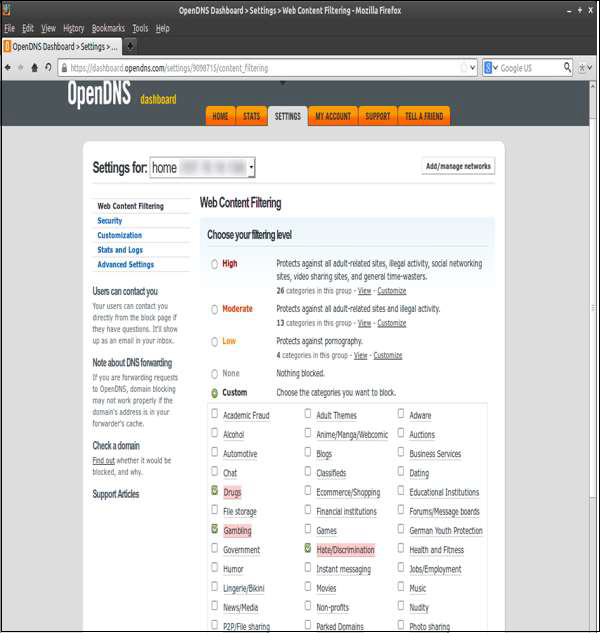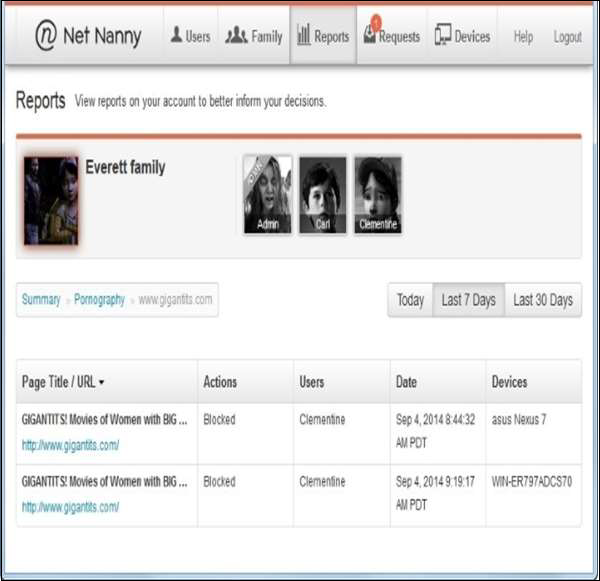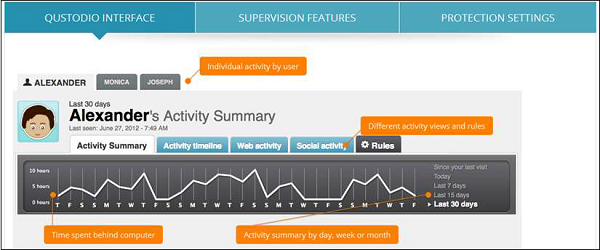
- Internet Security - Home
- Internet Security - Overview
- Internet Security - Cookies
- Internet Security - Phishing
- Internet Security - Social Network
- Internet Security - Chrome
- Internet Security - Mozilla
- Internet Security - Explorer
- Internet Security - Safari
- Internet Security - Gaming
- Internet Security - Child Safety
- Internet Security - Spamming
- Internet Security - Chatting
- Internet Security - File Download
- Internet Security - Transactions
- Internet Security - Banking
- Internet Security - e-Commerce
- Internet Security - Certificates
- Internet Security - Email Security
- Internet Security - Identity Theft
- Internet Security - Cybercrime
- Internet Security - Laws
- Internet Security - Checklist
Internet Security - Child Safety
In this section we will focus on Childrens safety as the Internet is a fact for all of us and it interferes in our daily lives. We will discuss the practical steps that we need to take without bothering them (children) and some programs used for this purpose.
Why is it so Important?
Generally, children or teenagers like to participate in chat rooms or social media which offer chats too, for many reasons to express themselves, curiosity, talk to other children around the world and to share their experiences. But on the other side, the kids need to know that in this environment there are people with bad intensions too. So the kids can be potential victims to bullies, harassments, etc. Also they can reveal information regarding the family members to other unknown persons with bad intentions.
As Internet is a place where anonymity can remain for the moment, it is a dangerous asset for unsupervised children. A kid or a teenager can be seduced by a stranger, who is polite at first contact and is willing to listen to them but on the other side he can be a pedophile luring whos only aim is to have a meeting which can lead to a sexual assault.
Even a small information that can be given by the child can be very dangerous because the attacker can trace down the information given by the kid.
As mentioned in the games section, many of them allow for voice as well text chatting between sessions. Kids should be prudent while using gaming chats in the same way as they do for chat rooms and social media, and should be cautious of overly eager new friends who ask them insisting for their mobile phone number, their address, or a face-toface meeting.
Social Rules Regarding Child Internet Safety
Here are a few simple pointers regarding child Internet safety.
The computer should be placed in the living room with the monitor facing towards the room so there nothing to hide. Always check if your child quickly changes the screen when you pass by, or is hiding files or disks someone may have sent them inappropriate content like pornography.
Discuss with your child exactly what is OK and what is not OK regarding what kind of websites are appropriate for them, which chat rooms to visit, and what kinds of things they can talk about there. Only let your kids use monitored chat rooms. Avoid .alt chat rooms they focus on alternative topics that may be inappropriate for kids. Get to know your childs online friends as you do with their school and neighborhood friends. Surf the web and chat online yourself so you understand what it is that your child is doing.
Make clear to your child that they need to tell you if they receive any upsetting messages while chatting, and that you will not be angry with them and ban the Internet as a result. Make it clear to the child that you understand that they cannot control what other people say to them and that they are not to blame if this happens.
Set time limits for Internet usage Software is available that enforces these limits which we will see in another section. Usage time should not be at late night. Do not permit your child to be left alone in cyberspace for long periods of time this is when they are ost vulnerable.
Tell your child that people in chat rooms are always strangers who can potentially harm No matter how often they chat with them, and no matter how well they think they know them. Tell them that people can lie about who they are, and their new friend can be a gown up instead of a 12-year-old child.
Never reveal personally identifiable information This can be their real name, gender, age, school, phone number, or where they live. Have them use a chat pseudonym that is non-provocative and does not hint at who they really are in reality. They must also watch other peoples personal information, such as friends names and phone numbers.
Dont let your kids open attachments to email messages from friends or file-sharing services without you being there to approve and scan the content for viruses.
Tell the kids that it is important not to meet online friends face to face without your knowledge. Determine the persons true identity before permitting any meeting and if they are not sure they should ask you. Make sure such meeting happens in a public place, and accompany them.
Use programs to save writing logs Most chat programs allow you to block a user by right-clicking on their name in your contact list and choosing the Block or Ignore feature. In the next section we will see what softwares we should use.
Use Software to Keep Track
Here is a list of software that are helpful in keeping a track of what is being viewed on your computer.
OpenDNS
The first one in the list is OpenDNS, which can be easily downloaded from the following link https://www.opendns.com/home-internet-security/. It has a free version and it allows the parents to filter all web content of all the devices that are connected to the network, this filters allow parents to select categories and add new webpages to be blocked as it can be entered in the monitoring mode, so you allow the child to navigate for the first hour and then you block all the webpages that you think are not good.

ContentWatch Net Nanny 7
This product can be bought through https://www.netnanny.com. As per the PCMagazine, it is a very good product and it offers all the features that a parental control software needs like Internet filter based on categories and time management. The Internet navigation can be set to a specific limit for all the day.
Another option it has is to mask profanity; it hides all the vulgar language in the webpages. Then it has social media monitoring as it alerts you for all the new friends of your child along with the chats, messages and user profiles. It also creates a limited profile for your child and as a remote administrator you can check remotely the reports of navigation. But the computer will be the base installation.

Qustodio Parental Control 2015
It can be downloaded from https://www.qustodio.com/en/. This parental control software gives options like Internet filter based on categories and time management. The Internet navigation can be set to a limit for all the day, while application control and social media monitoring alerts you for all the new friends of your child and the chats and messages along with any new user profiles. It also creates a limited profile for your child along with a safe search technology.
